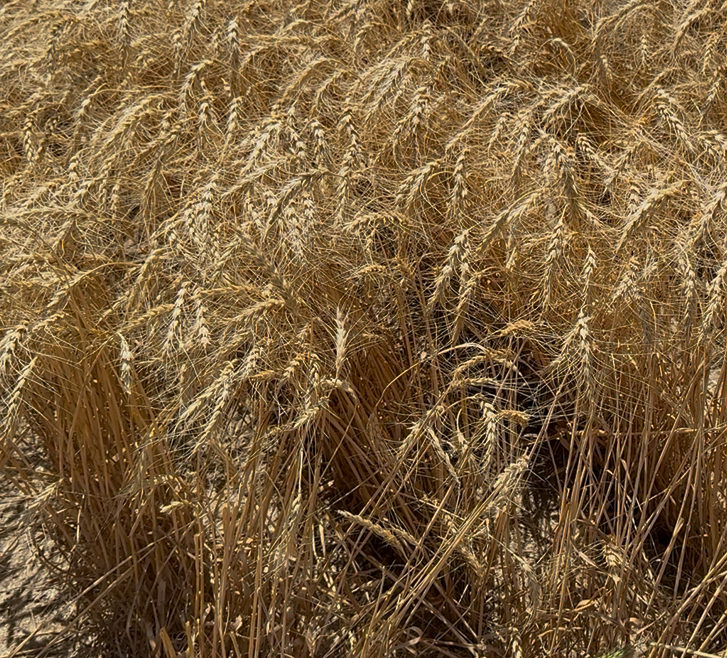
Signs of Optimism Emerge During Harvest
Just an hour or so outside of the Denver metro area lies Metro Water Recovery’s METROGRO Farm. Here, biosolids are applied as a fertilizer to grow crops like winter wheat, barley, and milo across 52,000 acres. For a few weeks in June, the METROGRO Farm becomes a hub of activity as truck drivers, seasonal helpers, mechanics, and contractors descend upon it for the official winter wheat harvest.
For Farm Administrator Jason Zimbelman, his time is spent addressing questions, quality checks, inspecting fields after a harvesting machine has run through, and a laundry list of anything else that might come up. From morning to sunset, it is a very busy time around the farm and will continue to be seven days a week until the harvest is complete.
For the next few weeks, the fields will be harvested, and the wheat will be loaded onto semi-trucks that will take the crop to the silos. Before the trucks empty the load, they will have to pass the scale house where the load is weighed, and a sample will be taken. The sample is tested for moisture, weight, and temperature. The samples will then be moved to the dockage tester, which separates the hulls and grit from the grain. Once approved, the trucks queue up at the silos and empty the loads into the grates below. The grain is emptied into a silo where the farm will store it until favorable market prices are available, ensuring the best returns before selling. The grain harvested at the METROGRO farm is used for livestock.
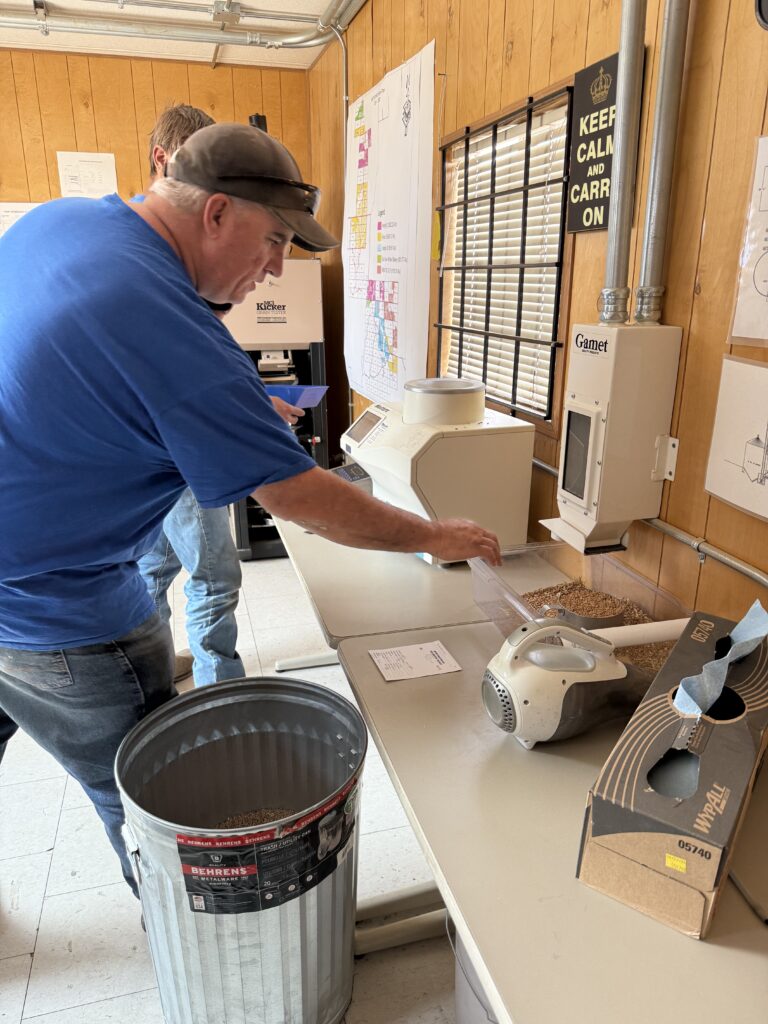
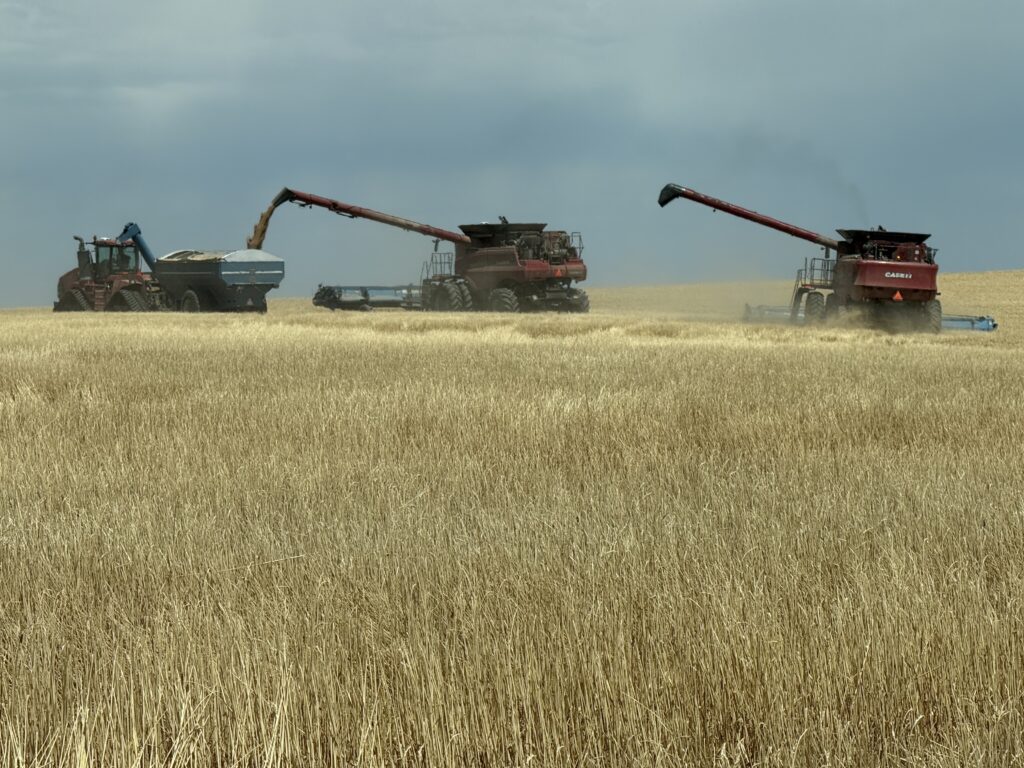
A Promising Start
“What’s it currently reading?” Zimbelman asks one of the seasonal harvesters to report on a bushel reading on a combine as he drives by. The operator replies, “I’m sitting at 98.” Zimbelman seems pleased but skeptical, “98? Are you fibbing? Send me a picture!”
Zimbelman has good reason to have cautious optimism. In the last few years, the wheat harvest has faced numerous challenges such as drought, excessive rainfall, delayed harvests, and crop damage from wind, hail, and sawflies. This year, though, things are shaping up to look like one of the best wheat harvests in years. “Normally we’ll get a number around 40 and other times even less,” explains Zimbelman. Just the day before, 55 truckloads were emptied to fill a grain bin, which was a single-day record for the number of trucks unloaded at the farm.
With some fall-time concerns and a lack of snow, things were looking questionable for the 2025 winter wheat harvest. However, April and May’s rainfall pulled the crop through, and now the farm is reaping the benefits.
Even sawfly damage is significantly down as compared to previous years. Sawfly is a nuisance issue with wheat farmers as the pest damages wheat crops by boring into the stalks of the wheat, which then weakens the wheat stalks causing them to collapse below the level that harvesting machines can pick up.
Leveraging New Technology
In addition to a favorable harvest outlook, another thing looks different on the farm this season: Wi-Fi monitoring. With a remote location, certain technologies have been out of reach for the farm. However, this spring, Wi-Fi became available at the grain house and now a new monitoring system watches the grain storage silos to monitor levels and reports on any issues that may require maintenance.
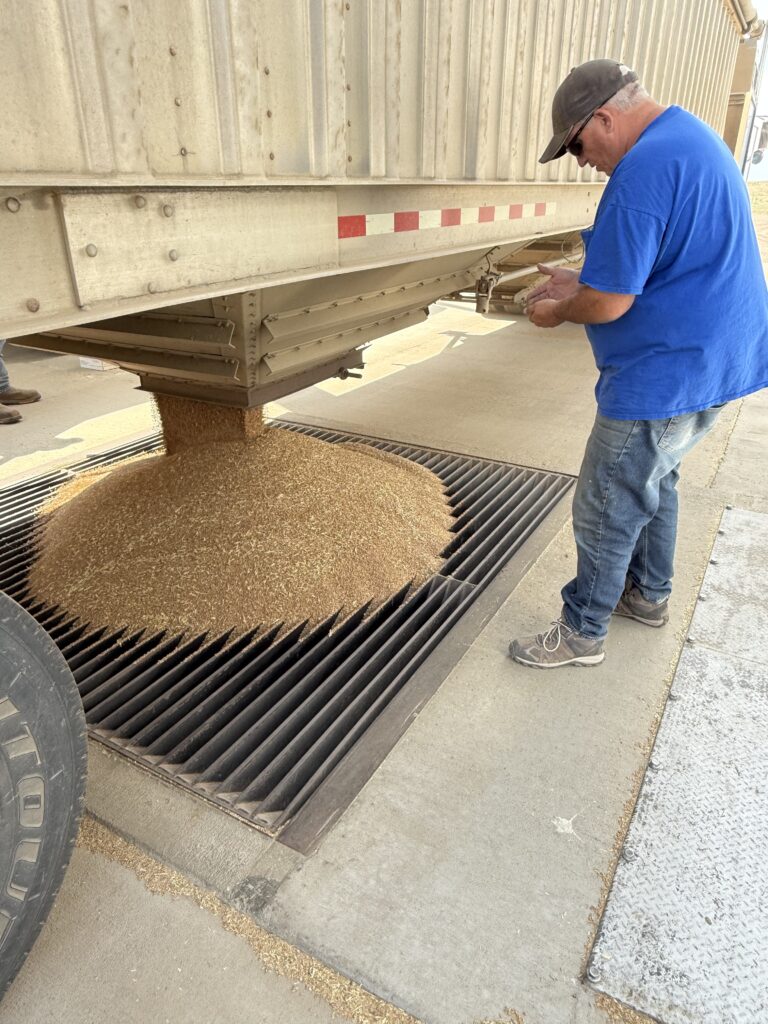
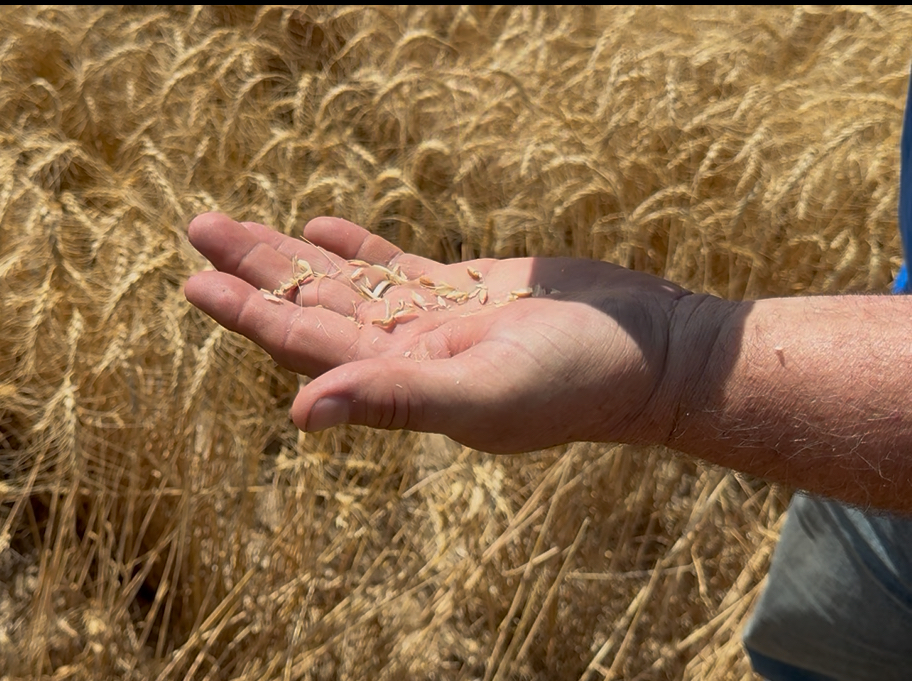
After the Harvest
Official yields of the 2025 winter wheat harvest won’t be available until after the harvest is completed to see how this year ranks, but all signs are pointing to the best harvest in years.
Despite the brief reprieve that follows a grueling summertime harvest, the work is far from over. Milo and barley will soon see their harvest season. Then come September, the fields that took this season off will be seeded with winter wheat and the cycle for Metro’s 2026 harvest will officially start. With luck, things will go like this year and repeated success will follow.
